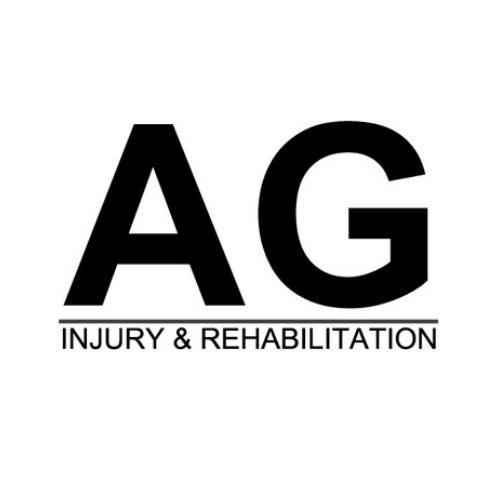Did you know that 95% of people report reduced pain symptoms after using knee braces? For millions struggling with knee pain, finding relief can feel like an endless journey through medications and therapies. Yet, one of the most effective solutions might be simpler than you think.
Knee braces have emerged as a game-changing tool in pain management, offering support and stability for everything from daily activities to athletic performance. Whether you're dealing with arthritis, recovering from an injury, or seeking preventive care, understanding the world of knee braces can be your first step toward improved mobility and comfort.
Importance of Knee Braces for Managing Knee Pain
Knee braces stand out as effective tools for managing various knee conditions and injuries. These supportive devices deliver targeted pressure and stability, helping reduce pain and inflammation. Studies show that 95% of people report decreased pain symptoms after using knee braces, making them a go-to option for those dealing with knee issues.
Common Conditions Helped by Knee Braces
Knee braces work well for multiple conditions, including osteoarthritis, ligament injuries, and general knee pain. For arthritis patients, braces help distribute weight more evenly across the joint, reducing strain on damaged areas. Athletes recovering from ACL or MCL injuries find that braces provide the extra support needed to prevent re-injury during activity.
How Knee Braces Support Recovery
The compression provided by knee braces helps decrease swelling and inflammation while improving blood flow to the affected area. This increased circulation can speed up healing and reduce discomfort. Additionally, braces limit harmful movements that could worsen existing injuries, acting as a protective barrier during daily activities.
Mobility and Activity Benefits
Wearing a knee brace can make a significant difference in physical activity levels. About 85% of users report better mobility when using knee support devices. People who previously struggled with walking, climbing stairs, or participating in sports often find these activities more manageable with proper knee support.
Prevention and Protection
Beyond treating existing conditions, knee braces play a key role in preventing further damage. They help maintain proper joint alignment and reduce stress on vulnerable areas of the knee. For active individuals, this added protection allows them to continue their regular activities with greater confidence and reduced risk of injury.
The right knee brace can make daily movements easier and less painful. Whether dealing with chronic conditions or recovering from an injury, these devices provide the support needed to stay active and maintain quality of life. With proper sizing and regular use, knee braces offer an effective solution for managing knee pain and supporting overall joint health.
Types of Knee Braces Available
Main Categories of Support
Four key types of knee braces serve different needs and conditions. Functional braces offer stability for knees with previous injuries. Rehabilitative braces keep movement limited during the healing process. Unloader braces shift weight away from damaged knee areas. Prophylactic braces help prevent injuries during contact sports and high-impact activities.
Functional Braces for Injury Recovery
Functional braces work best for people who have already experienced knee injuries. These braces include straps and hinges that stabilize the joint while allowing controlled movement. Athletes returning to sports after ACL tears or other ligament damage often use these braces to prevent re-injury.
Unloader Braces for Arthritis Management
People with osteoarthritis benefit from unloader braces, which redistribute pressure within the knee joint. These braces move stress away from the damaged part of the knee to less affected areas. By shifting the load, they reduce pain and make walking more comfortable.
Rehabilitative Support Options
During recovery from surgery or severe injuries, rehabilitative braces control knee movement in specific ways. These braces typically feature adjustable hinges that let medical professionals set exact angles for safe movement. This controlled mobility helps prevent damage while the knee heals.
Simple Support Solutions
For minor knee issues, slip-on compression sleeves provide basic support. These lightweight options work well for everyday activities and mild discomfort. Choosing the right knee brace depends on your specific condition and needs. While they don't offer the same level of protection as structured braces, they help with minor swelling and stability.
The right knee brace depends on your specific condition and activity level. Some people need rigid support for serious injuries, while others do well with basic compression. A healthcare provider can recommend the most appropriate type based on your knee condition and lifestyle needs.
Factors to Consider When Choosing a Knee Brace
Materials Matter
Different materials offer varying levels of support and comfort. Neoprene braces provide good compression and heat retention, helping sore muscles and joints feel better. Fabric options allow better airflow, making them ideal for extended wear. Plastic components add structure and stability but might feel bulky for some users.
Getting the Right Fit
A knee brace must fit properly to work effectively. Loose braces slide down during movement, while overly tight ones can cut off circulation and cause discomfort. Measure your knee carefully, following the manufacturer's sizing guide. The brace should feel snug but not restrictive, allowing natural movement while maintaining support.
Budget and Quality Balance
Knee brace prices range from £20 to several hundred pounds. Basic compression sleeves cost less but may need frequent replacement. Higher-end braces with hinges and adjustable straps typically last longer and provide better support. Consider how often you'll wear the brace and what level of support you need when setting your budget.
Activity Level and Knee Condition
Your lifestyle plays a key role in brace selection. Athletes need different support than office workers. Someone with mild knee pain might do well with a simple sleeve, while those recovering from surgery need more structured support. Think about when and where you'll wear the brace - during sports, at work, or for daily activities.
Medical Input Counts
Before buying a knee brace, talk with a healthcare provider. They can assess your specific knee issue and recommend the right type of support. Some conditions require particular features, like special hinges for ACL injuries or pressure points for arthritis relief.
Comfort for Daily Use
Pick a brace you'll actually wear. Even the most advanced brace won't help if it's too uncomfortable to keep on. Look for features like breathable materials, smooth seams, and easy adjustment options. Some braces work better under clothing than others - an important factor if you plan to wear them throughout the day.
My Top Recommended Knee Braces for Pain Relief
Premium Support Options
The Bauerfeind GenuTrain stands out with its pressure-reducing knit design. The brace features a breathable fabric that keeps your knee cool during extended wear. At £200-250, it offers medical-grade knee support for chronic knee conditions.
DonJoy Performance Bionic FullStop provides specialized support for ACL recovery. Its hinged design limits harmful movements while allowing natural motion. The brace costs around £250 and includes adjustable straps for a custom fit.
The Breg Fusion combines a lightweight frame with strong support. Its slim profile works well under clothing, making it good for daily wear. It's a more costly option priced at around £525, it helps with various knee conditions without restricting movement.
Mid-Range Solutions
Bauerfeind GenuTrain S focuses on compression and stabilization for ligament injuries. The brace includes special zones that target pressure points around the knee. It retails for anywhere up to £300 but works well for sports activities.
The Neenca Professional Knee Compression Sleeve offers good value at £30-40. It provides moderate support for mild knee pain and includes silicon grip strips to prevent slipping during use.
Basic compression sleeves start around £15-25. While simple in design, they offer adequate support for everyday activities and mild discomfort.
Specialized Support
Unloader knee braces help people with osteoarthritis by shifting weight away from damaged areas. These braces typically cost £300-400 but can significantly reduce pain during walking and standing.
Hinged knee braces add extra stability for ligament problems. The metal or plastic hinges stop excessive movement while supporting the joint. Most cost between £50-100.
Patellofemoral braces feature a special opening that keeps the kneecap aligned. This design helps runners with knee pain and athletes who experience front knee pain. Prices range from £20-60.
Adjustable wraparound braces offer versatile support for different activities. The straps let you control compression levels throughout the day. Most cost £40-70 and work well for general knee support.
Each brace type serves specific needs, so match the features to your condition and activity level. Consider factors like wear time, support level, and budget when selecting a knee brace.
Finding Your Path to Knee Pain Relief
Choosing the right knee brace doesn't have to be overwhelming. With options ranging from basic compression sleeves to advanced unloader braces, there's a solution for every type of knee pain and activity level. The key lies in matching your specific needs with the appropriate support level and features.
Remember that investing in a quality knee brace is an investment in your mobility and quality of life. Whether you opt for a premium solution or a mid-range option, the right brace can make a significant difference in managing pain and maintaining an active lifestyle. Consult with healthcare professionals to find your perfect match and take the first step toward better knee health.

